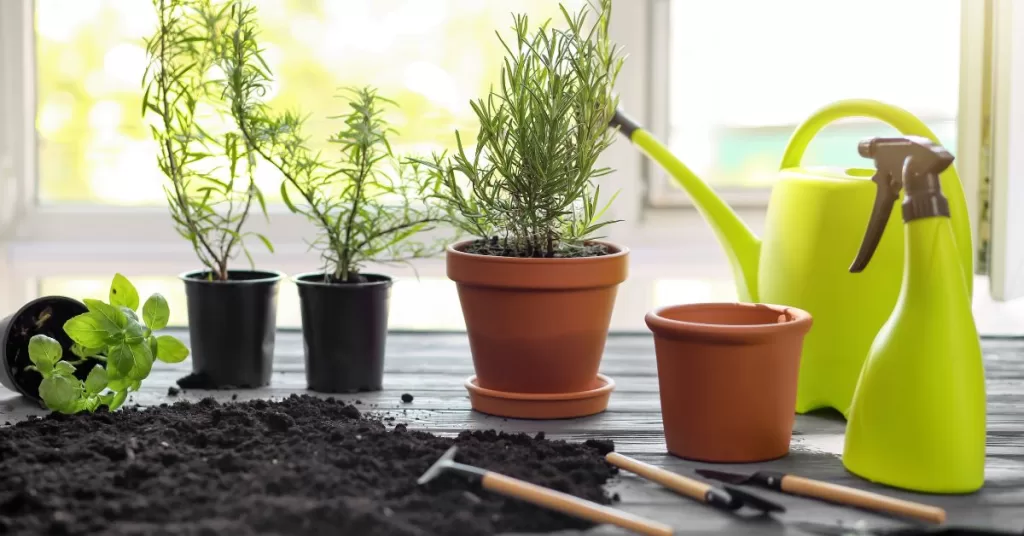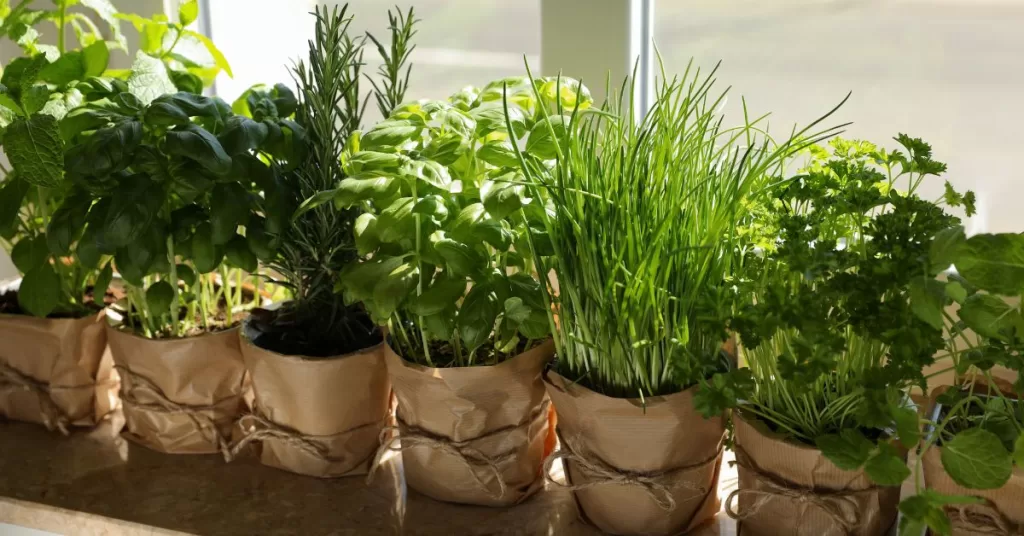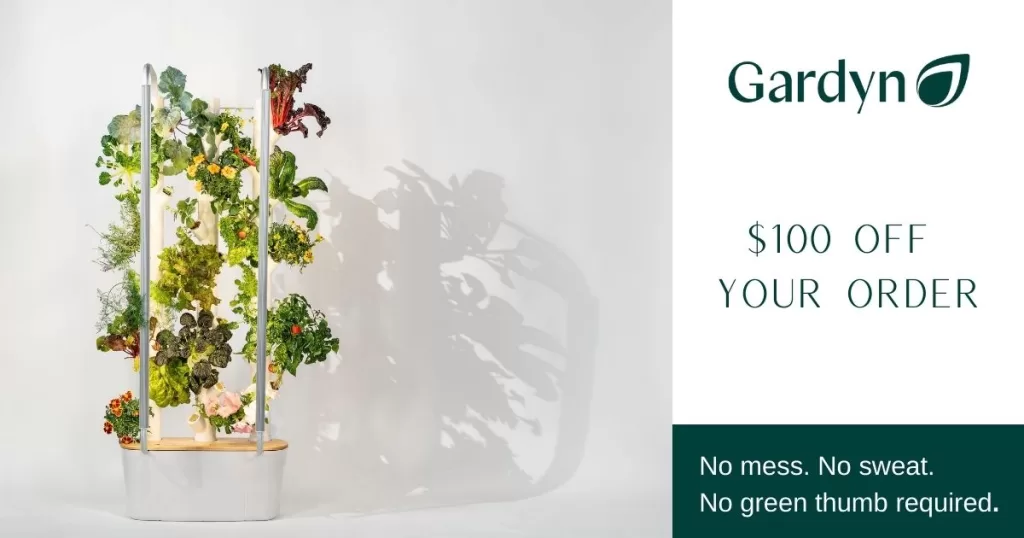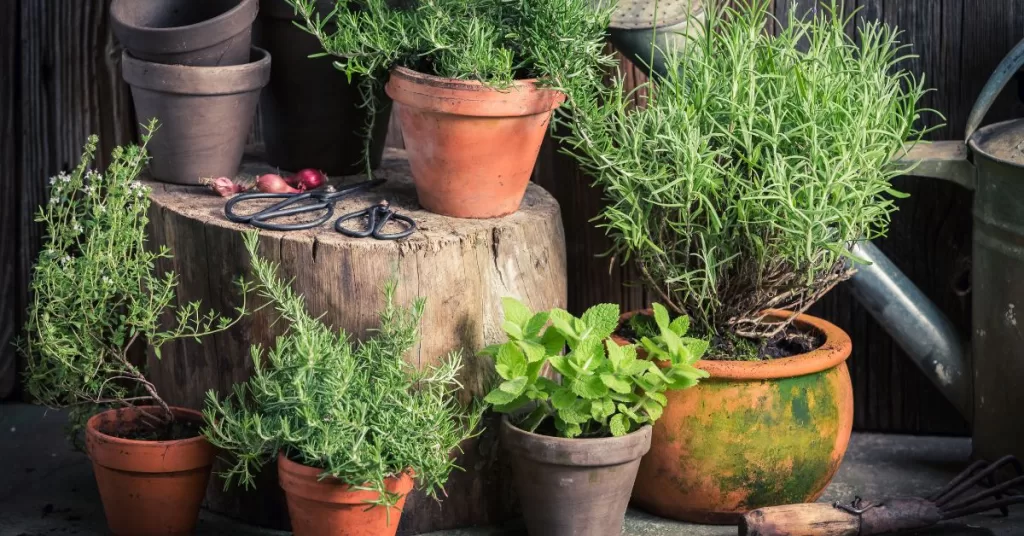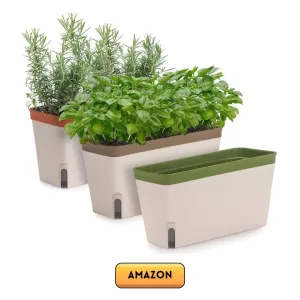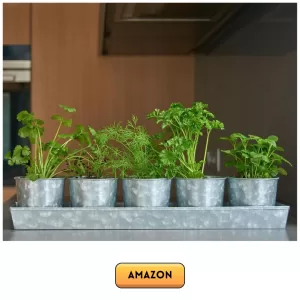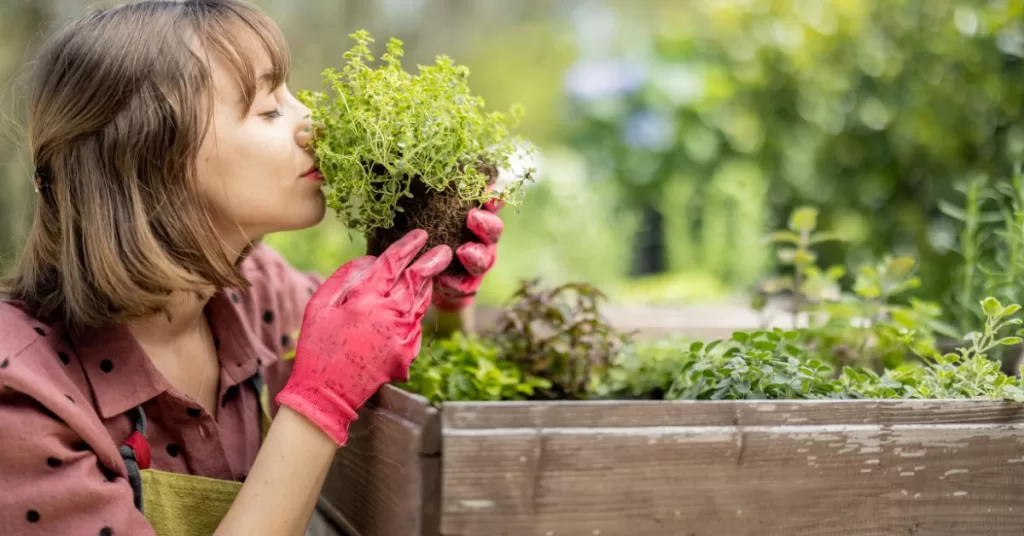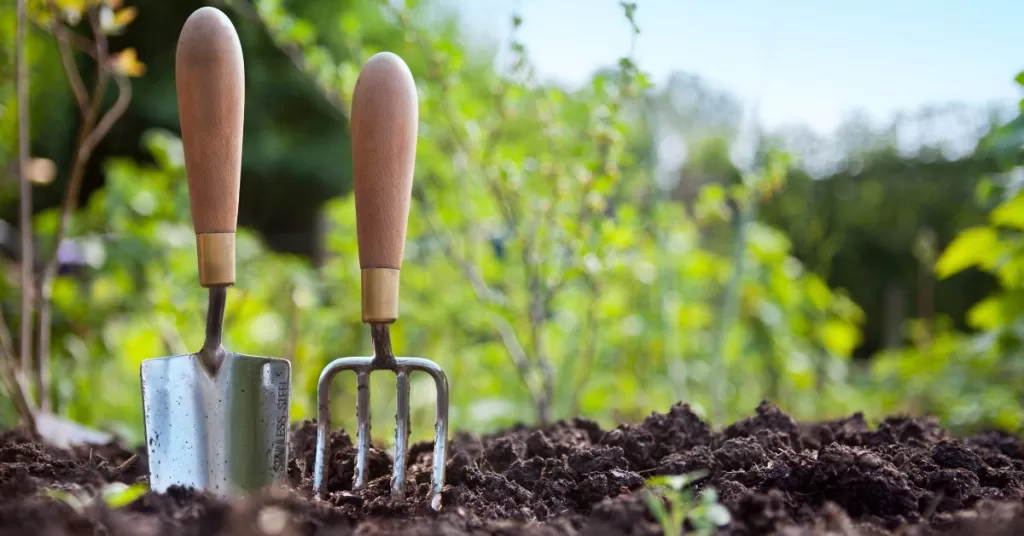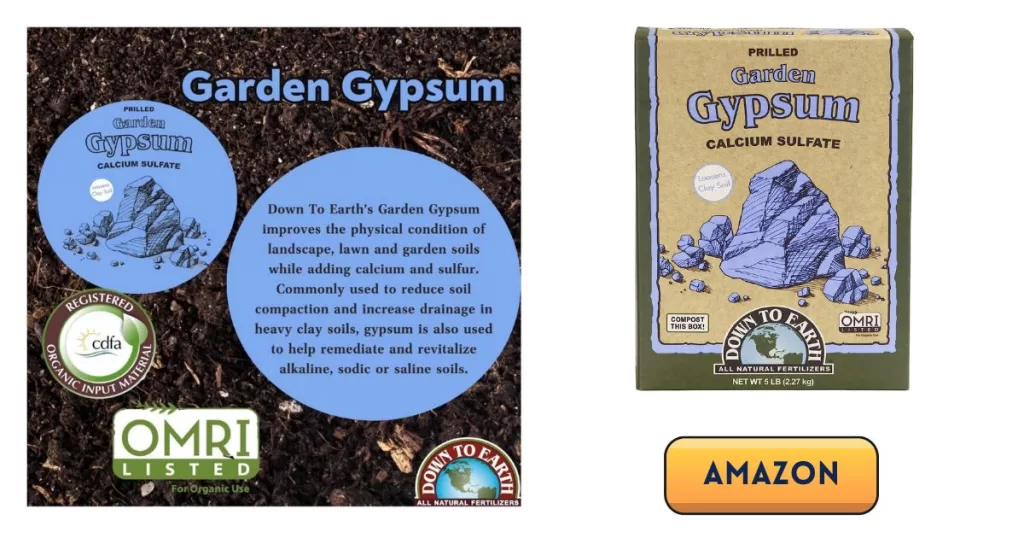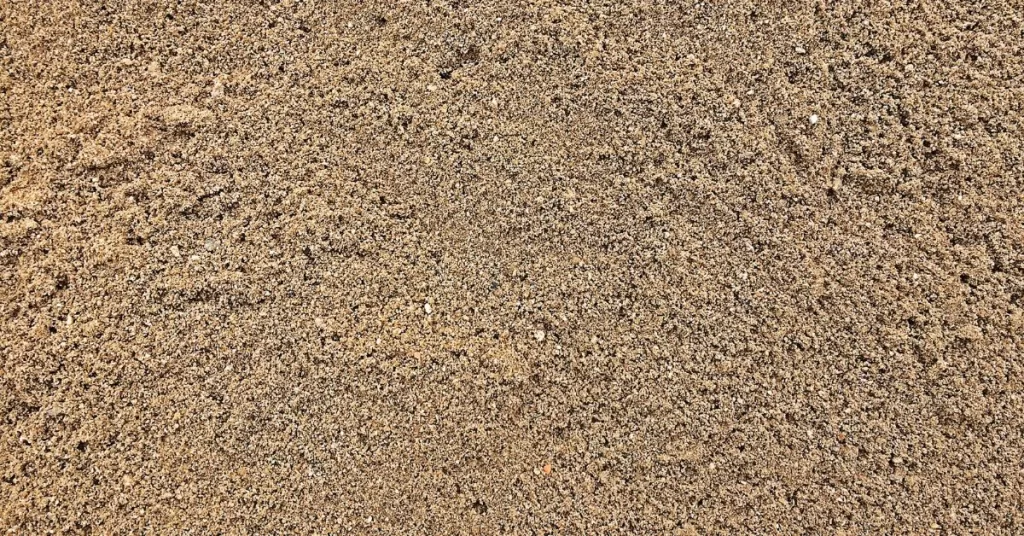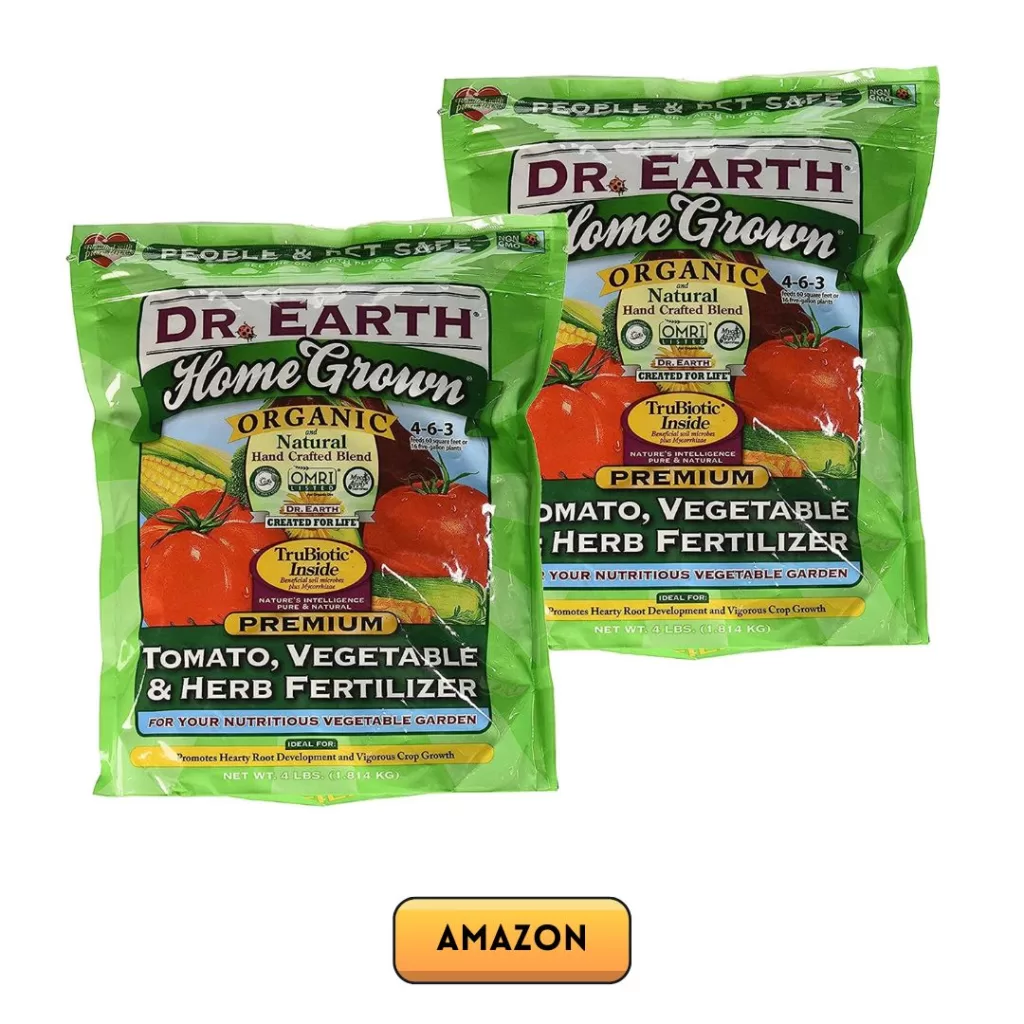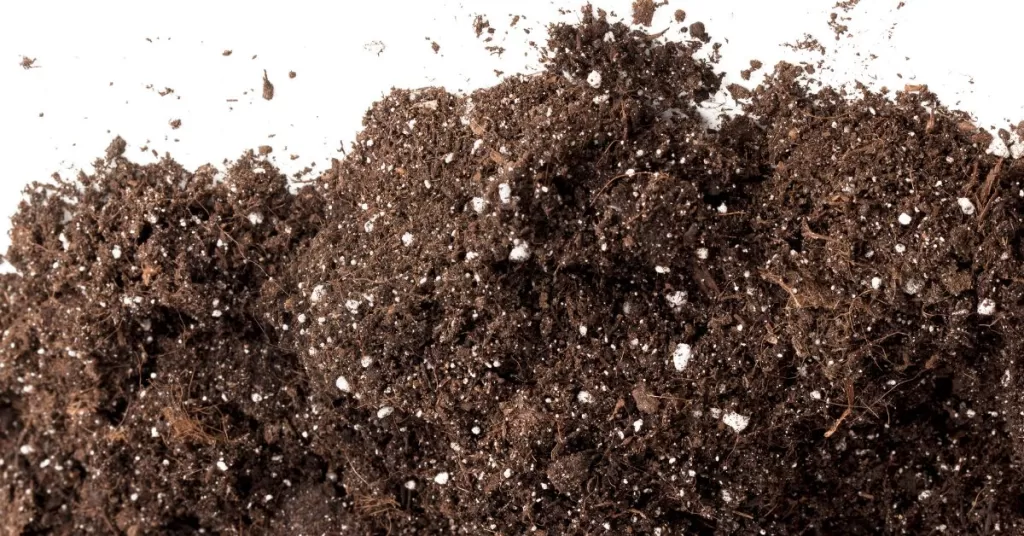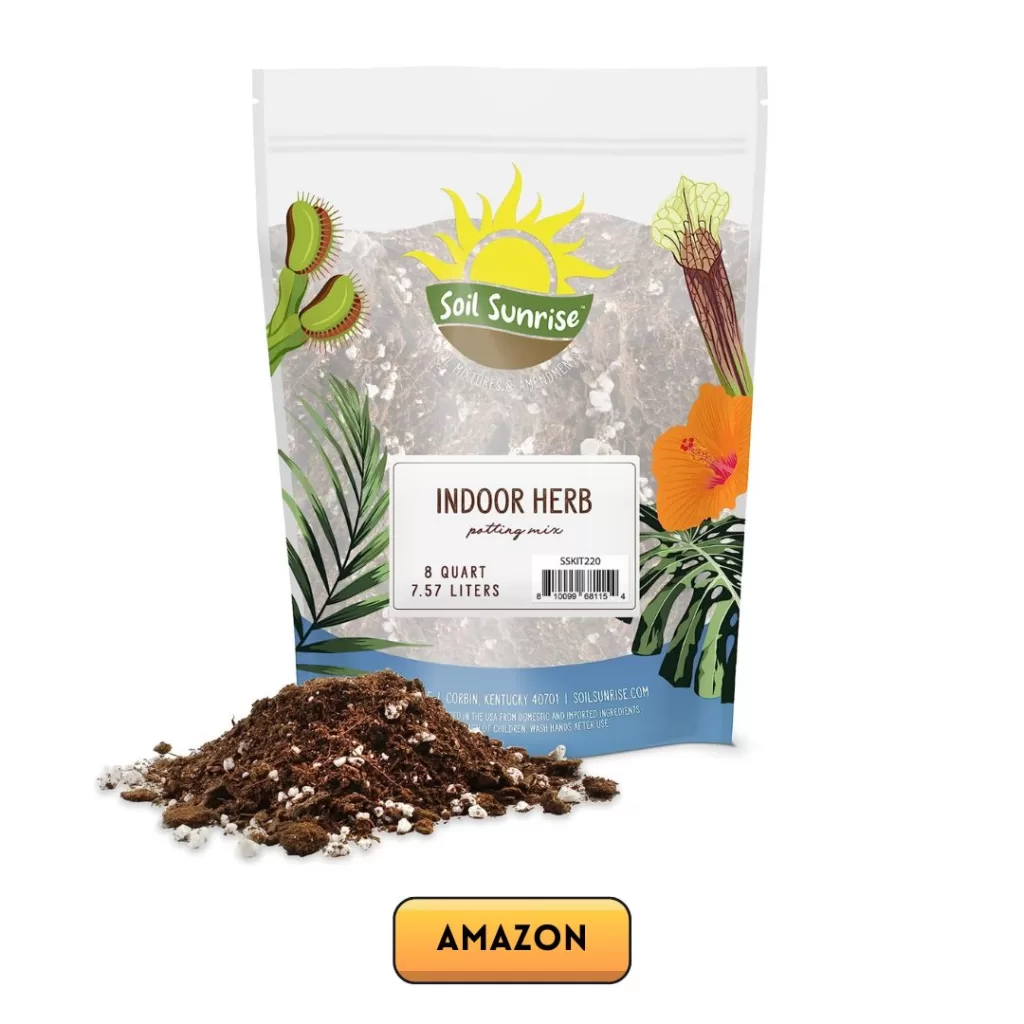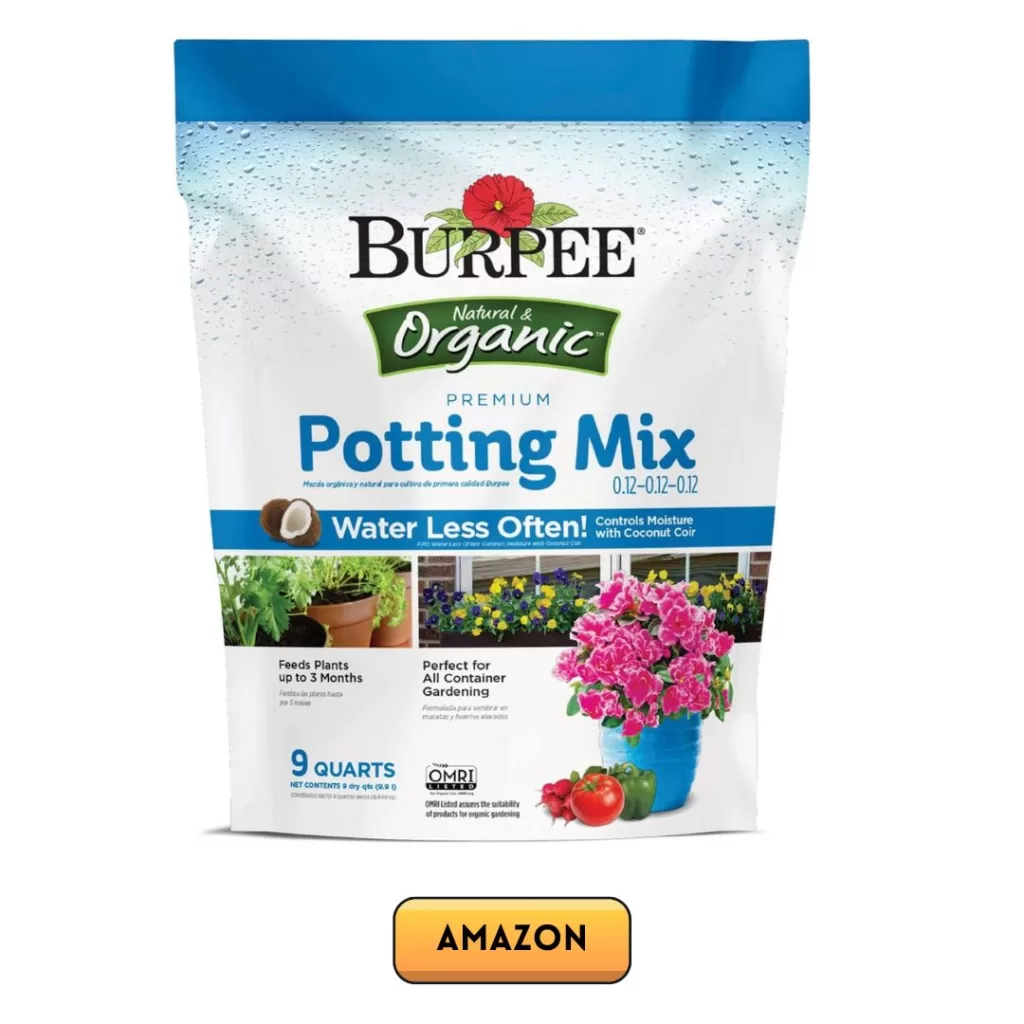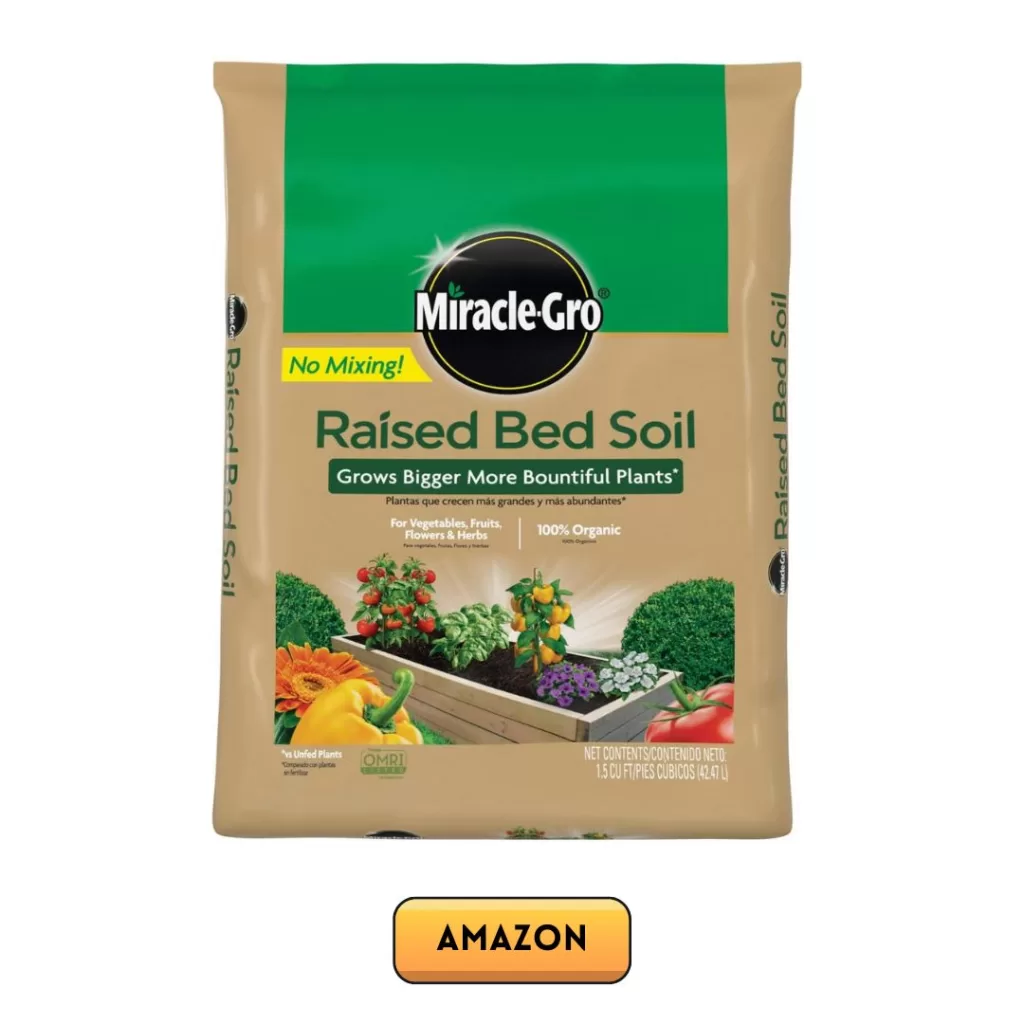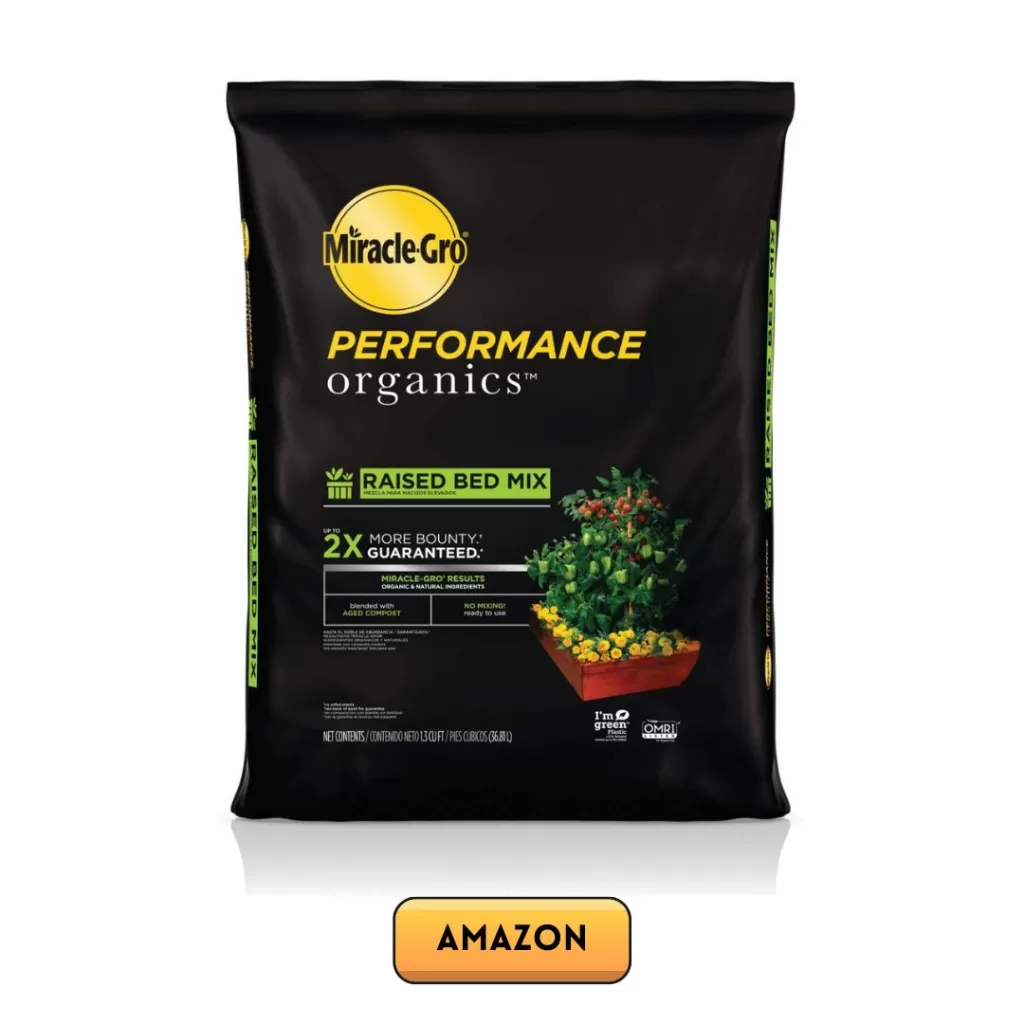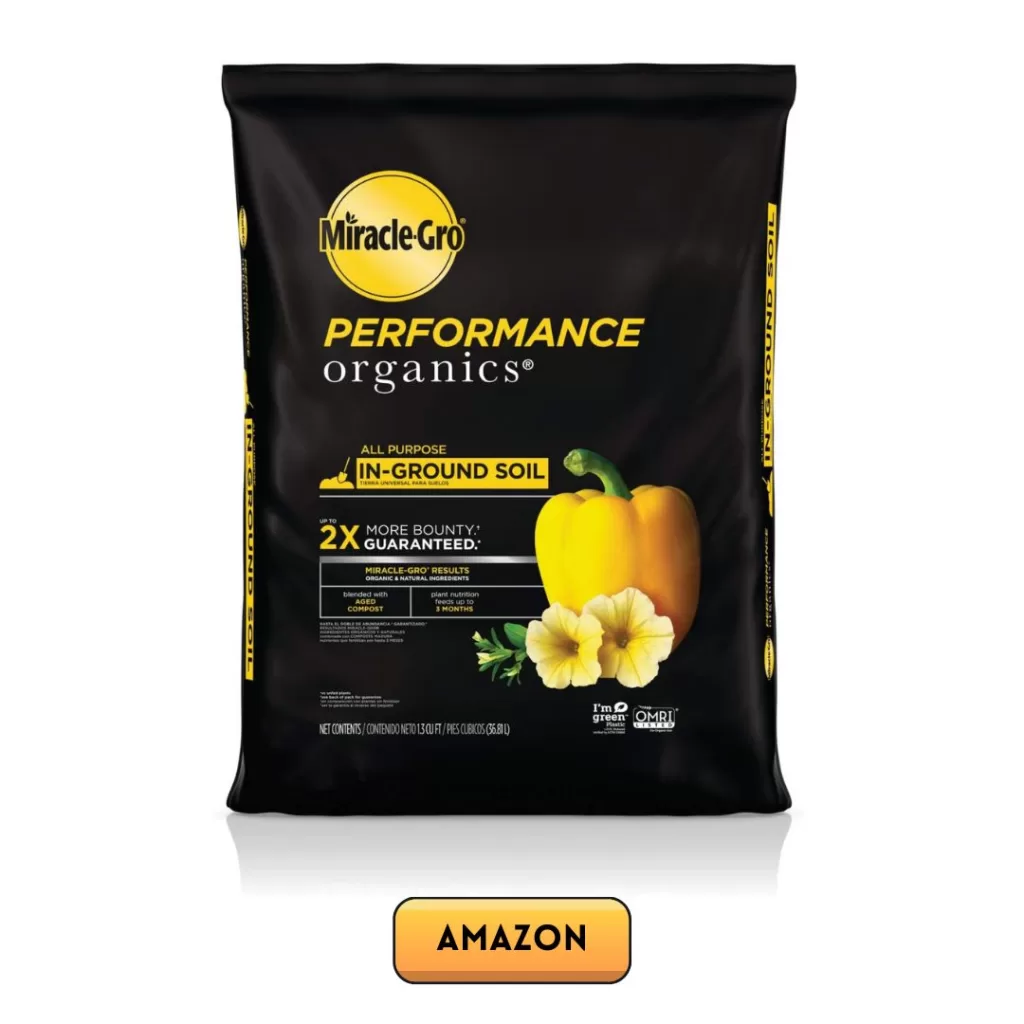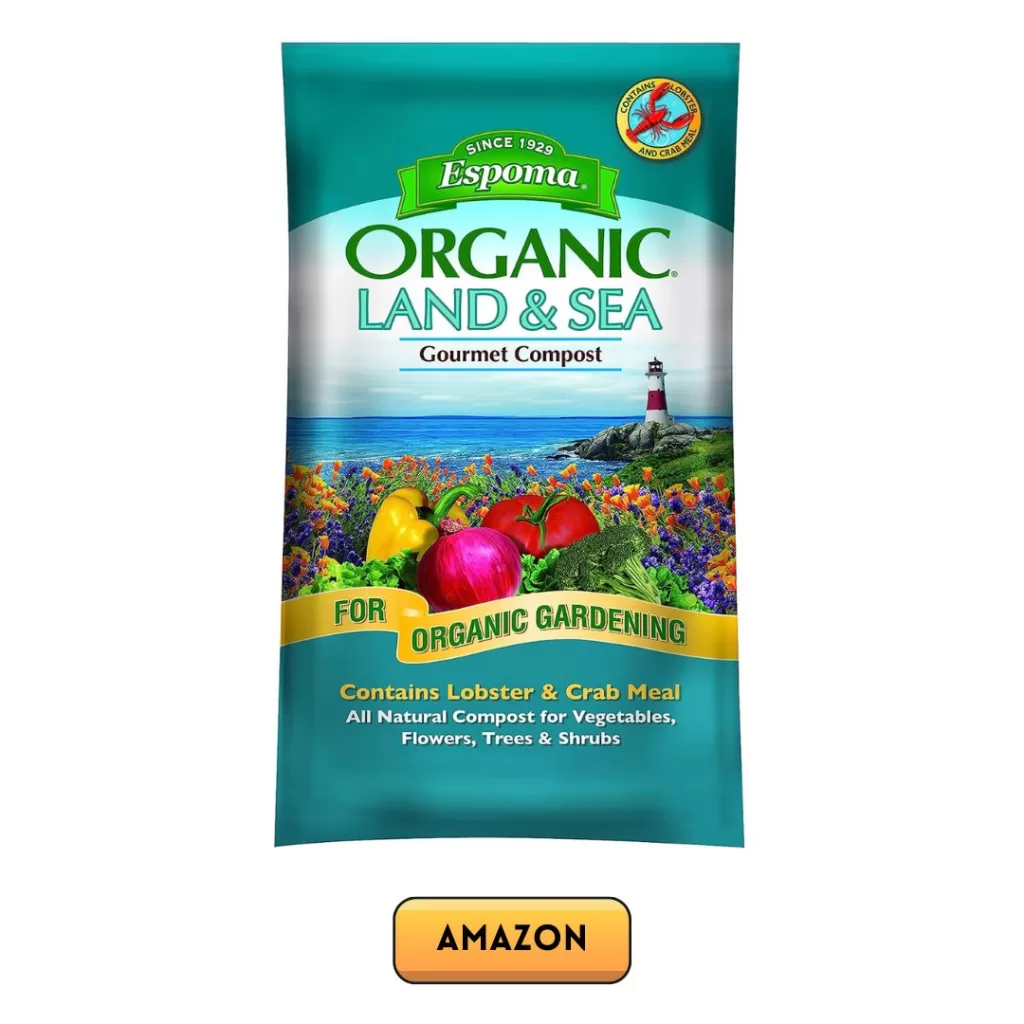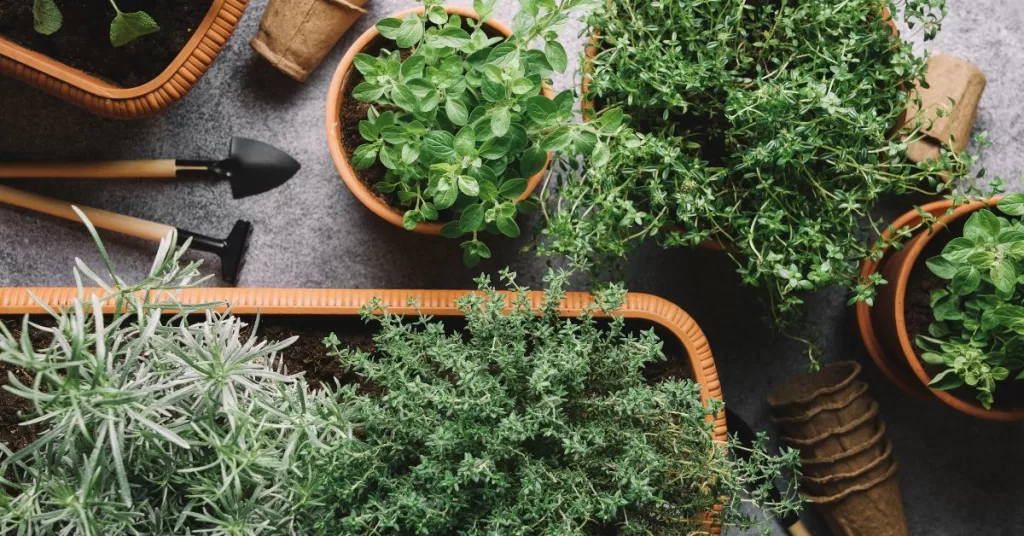
Best Potting Soil For Herbs
With A Complete Herb Growing Guide
Everything You Will Ever Need To Know About Growing The Best Herbs Indoors Or Out
- Nathan Heinrich
- Rome, Italy
This article is your guide to the best potting soil for herbs as well as how to care for your herbs once they’re planted.
Growing your own fresh herbs is a very good idea.
Armed with a bit of basic knowledge, you will be able to harness the power of good soil, sunshine, and water into a beautiful crop of your favorite herbs.
As the son of a California farming family, who studied botany and horticulture, and worked in the nursery industry for 10+ years, I have had my hands in just about every kind of soil you can imagine.
The importance of good soil cannot be overstated.
Top-quality garden soil is the foundation of herb and vegetable gardens – as well as anything else you want to grow.
In fact, soil is the “black gold” that sustains every living thing on our beautiful planet.
Table Of Contents
Where Do You Plan To Grow Herbs?
When I got my first “nursery job” as a teenager at a local garden center, I soon discovered that gardening can intimidate people.
Mainly because, people are afraid to make a mistake.
If killing plants is not only one of your worst fears but also something you’ve become especially skilled at – you’re in good company.
The good news is that with a basic understanding of sun, water, and soil, you will be on the road to success in your herb garden or any other type of gardening you endeavor.
Location, Location, Location
The first question you must answer is “Where” are you planning to grow your herbs?
Indoors?
Outdoors?
In a container?
In a raised bed?
Directly into the garden?
Your answers to these questions will determine the type of potting or garden soil you should use.
Indoor Herb Garden
If you’re a city-dweller who lives in a townhouse or apartment and the only option you have is to grow your herbs indoors, you will face some unique challenges.
But challenges with indoor herbs can be overcome with the right type of potting soil and enough bright light.
For starters, make sure you put your pots in a sunny spot with at least 3 to 5 hours of full sun each day.
A south-facing window is often a great location for your indoor herb garden.
One of the benefits of technology is that now we are able to grow herbs inside with a grow light – and in some special cases no soil at all.
One of my favorite herb-growing systems, is made by Gardyn.
It’s the best one on the market for city-dwellers or those who don’t like to get their hands dirty.
Back To Soil...
However, since we are focused on herbs and gardening soil, in this article, let’s get back to the different types of indoor potting mixes in which to plant your fragrant beauties.
While planting herbs indoors can be challenging, making sure to use a good indoor potting mix like Indoor Herb Plant Soil or Culinary Herb Potting Soil will give you the best chance for success.
You can find this soil mix, ideal for growing herbs indoors, at your local nursery garden center, or by ordering on Amazon with the links below.
Indoor Herb Gardening Tips:
Here are a couple of things to consider when growing herbs indoors.
Because we tend to keep our homes at very comfortable temperatures, it takes potted herbs longer to dry out than it would if they were growing outdoors.
So, it will be very easy to over-water your herb plants.
Do not water when you “feel like watering”.
We love our plants and we know they need water to live, but too much water can be deadly.
Don't Water Until Doing The Finger Test
Before adding a drop of water to your plants, lightly touch the surface of the potting soil.
If you feel any moisture whatsoever, do not add any water.
Allow the soil of your plants, especially indoor plants, to be almost completely dry before watering.
When you do water your herbs make sure to thoroughly water so that the soil is fully saturated and water is coming out of the drainage holes in the bottom of the pot.
Giving your herbs tiny drinks at a time is not the way to do it.
Outdoor Container Gardening
If you live in a building with a balcony or you have a tiny yard and all you have room for is a few ceramic or plastic pots for your herbs, then you’re in luck.
Herbs grow very well in pots.
For herbs planted in containers outdoors, you will want to choose a high-quality potting soil that has plenty of high-quality organic material to maintain adequate moisture levels for the roots.
The soil should also having enough “openness” and drainage and supporting oxygen levels so that the roots don’t get waterlogged.
Like us, plants need both water and oxygen to thrive.
A poor-quality soil that doesn’t drain properly or that dries out too quickly and doesn’t retain moisture will stress your herbs.
Stressed weak herb plants won’t provide you with the healthy leaves and shoots you need for cooking and flavoring food.
Some of the best potting soils, for herbs in pots, are Dr. Earth 818 Pot of Gold Soil and Organic Potting Mix.
These can be found at your local garden center or ordered on Amazon with the links provided below.
Outdoor Container Herb Gardening Tips:
As with indoor herb gardening, make sure you position your herbs in a sunny spot in your outdoor space.
Because the plants are outdoors, ideally in full sun, they will dry out faster.
Make sure to check the moisture level with a moisture meter or by putting your finger in the soil to see if it is dry before watering.
Even with outdoor herb containers, it is very easy to over-water.
Make sure there are drainage holes at the bottom of the pot to allow proper drainage.
Never plant anything into a pot without drainage holes.
If you’re looking for the best pots for growing herbs, below are some that I recommend.
Outdoor Raised Garden Beds
If you are fortunate enough to have the garden space for raised beds, you are set up for one of the most successful herb-growing environments of all.
Raised beds are the perfect place to grow a kitchen or herb garden because they are easy to tend, water, and harvest.
If you have built your beds but they do not yet have soil, you will want to buy an outdoor potting soil such as Miracle-Gro Performance Organics Raised Bed Mix.
If you are working with beds that are already partially filled with native garden soil, you will simply need to amend the soil to improve its drainage and water retention abilities.
The best soil amendments for raised garden beds to mix 50/50 with your existing garden soil is Espoma Organic Land and Sea Gourmet Compost.
By adding these potting mixes to your raised garden beds you will have rich soil perfect for growing growing herbs.
Outdoor Raised Beds Herb Gardening Tips:
For the best result, make sure your raised beds are in a sunny location.
Water early in the morning or early evening.
Never “put your plants to bed wet” at night – this can lead to fungal issues.
Once your herbs are established they will be able to pull more moisture out of the soil, so you may only have to water 2 or 3 times per week.
If you are unsure about when to water your herb garden beds or herb pots, buy a water meter at your local nursery or garden center, as shown below.
You can also order a water meter on Amazon.

Outdoor In-Ground Herb Garden
If you want to grow herbs in a traditional garden plot you will have a unique set of challenges as well as unique benefits.
Ordinary garden soil in your garden plot comes in many different textures which need to be handled differently.
Gardening With Clay Soils
Clay soils are the most challenging to work with in the garden.
But with the right tools and soil amendments, you can transform tough clay soil into fertile soil.
The problem with clay soil is that it offers very little available oxygen.
Less oxygen means the roots of your herbs and vegetables will be less healthy, they will grow more slowly and they will be more prone to root-rot.
The cure for heavy clay soil is organic matter.
Organic matter is anything that comes from plants.
Compost, leaves, wood chips, bark, grass clippings, peat moss, plant-based kitchen waste, and bagged garden soil amendment are all examples of things to add to clay soil to improve its structure over time.
Another old gardener’s trick is to add gypsum to the soil to help it form larger clusters and open the soil structure for more oxygen.
Oxygen is able to permeate clay soils that are generously amended with a high-quality garden mix or homemade compost.
The one thing you should never add to clay soil is sand.
Sand and clay are the ingredients for making bricks and concrete.
This is some of the best soil amendment to add to clay soil to improve it and get it ready for planting, Miracle-Gro Performance Organics All Purpose In-Ground Soil.
This bagged soil can be found at garden centers or ordered online through Amazon.
Gardening In Sandy Soil
Sandy soils are much more forgiving and easier to work with in a garden.
The main problem with sandy soil is that it tends to dry out quickly.
Interestingly, you use the same things to improve sandy garden soils as you use to improve clay soil – but for different reasons.
While organic matter is added to clay soils to open them up and allow oxygen to enter the soil, sandy soils are improved by adding organic matter because it helps the soil retain moisture.
Here are some of the best products for improving sandy soil in your garden: Organic Land and Sea Gourmet Compost or Miracle-Gro Performance Organics All Purpose In-Ground Soil.
These mixes can be found at local nurseries or box stores or ordered online through Amazon.
How Do You Grow Happy Herbs?
When growing herbs in a traditional garden plot, make sure to amend the soil first.
Drip watering systems are the most effective ways to water in a garden.
Plant your more drought-tolerant herbs like salvia, rosemary, oregano, sage, and lavender together as they need similar amounts of water.
Varieties that need more water like basil, parsley, mint, and chives should also be grouped together.
This will keep your herbs happier and healthier as you give them the correct amount of water.
Light
One of the most important things to consider when growing herbs is to make sure they get enough sunlight.
Direct sunlight for at least 5 hours a day between the hours of 10 am and 5 pm is ideal for growing herbs.
Some herbs say “full sun” on their growing labels and others say “part sun”.
Full sun means at least 5-7 hours of direct sunlight every day.
While part-sun means at least 3-4 hours of sun direct sun each day.
For the best herb plant growth, read the labels and follow the directions.
As a rule of thumb, most herbs prefer as much sun as you can give them.
Many herbs are native to the hot sunny Mediterranean region.
Where I live in Italy, herbs are usually planted in the sunniest part of the garden.
Water
Herbs need regular water but not too much water.
Check the soil moisture before watering.
One of the worst things you can do for herbs is to give them too much water.
Water in the early morning for the best results.
The worst times of the day to water are at the hottest time of the day or at night.
If you are unsure when your herbs need water, watch them for any signs of wilting.
And if you want even more guidance, buy a water meter to tell you when the soil in your pots or garden is in need of water.
Plant Similar Herbs Together
In order to avoid wasting water, group herbs with similar water requirement together.
Herbs that need less water:
salvia, rosemary, oregano, sage, and lavender
Herbs that need more water:
basil, parsley, mint, and chives
Organic Fertilizers
Since herbs are used in cooking and are eaten fresh, avoid using harmful man-made synthetic fertilizers and instead opt for healthier organic fertilizers such as:
- seaweed fertilizer
- fish emulsion
- earthworm castings
- bat guano
- or an organic fertilizer like Dr. Earth (for herbs and vegetables) ↓
Pests
Pests can be a common problem when growing herbs – especially indoors.
Fungus gnats are one of the most common pests.
Typically gnats appear when you have over-watered your herbs and not allowed them to dry out between waterings.
Too much water attracts gnats and other unwanted pests.
Dry soil and sunlight are the best ways to solve a gnat infestation in your container plants for herbs or any other type of houseplant.
Take your herbs outside to a sunny location and let them dry out completely before watering again.
A few days of sunlight and dry soil will usually solve your gnat problem.
Don't Plant Too Deeply
One of the most common mistakes people make when gardening is to plant new plants too deeply.
A plant should never be planted any deeper than it was in the container you bought it in – keep the plant’s soil just slightly higher than the level of the soil you are planting into.
Planting too deeply will choke the plant and cause the crown and stems to rot, killing the it very quickly.
Tomatoes are the only garden plants that can be planted several inches deeper than in their original pots.
Remove the leaves of your tomato plant and plant them as deeply as you like up to the top 1/3 of the plant.
What Makes A Good Herb Potting Soil?
Good soil has several key elements.
Potting soil or any type of growing medium has a balance of natural ingredients including minerals and organic matter.
Healthy soils are naturally full of beneficial soil microbes which help your herbs and vegetables thrive.
Moisture Retention
Organic ingredients in your potting soil such as compost, Canadian sphagnum peat moss, coconut coir, yard clipping, wood chips, pine bark, or anything else that comes from decaying plant matter will provide both water retention and proper drainage in your soil.
Organic matter is the secret to the best garden soil and potting mixes.
Stable root zone
Another very important function of a quality garden or potting soil is to provide stability to the roots of the plant.
When heavy wind and rains blow through your garden area, plant roots secure the plants and keep them from getting washed or blown away.
Good Drainage
Soil moisture is highly important when gardening, but good soil drainage is equally as important.
Well-drained soil provides the root system of your herb plant with the right balance of moisture and oxygen.
PRO TIP: Don’t buy cheap, dollar-store or box store “potting soil” without the minerals and compost your plants need.
Many poor-quality bagged soils are just chopped up wood from construction sites that has been dyed black and sold as “potting mix”.
Avoid these at all costs!
The soils referenced in this article are all top-quality, safe options.
Best Organic Potting Soil For Herbs
Good garden soils and potting soils are typically naturally balanced with the correct balance of acid and alkaline.
However, if your soil is too high in acid or too alkaline, herbs and other plants can suffer.
Getting soil tested might be necessary in certain circumstances.
Once you know if your soil is out of balance or not you can add the correct soil amendments and essential nutrients to correct the soil pH.
Your local garden center will often be able to help with soil testing or you can buy a soil pH tester online.
Best Indoor Potting Soil For Herbs
For the best organic potting soil for herbs indoors, these are a couple of my favorites:
Best Organic Potting Soil For Herbs
These brands make the best organic potting soil for herbs. They also happen to be some of my favorite and best outdoor potting soils for herbs:
Best Garden Soil For Raised Beds
Here are two of my favorite herb planting mixes for raised beds:
Best Organic Planting Mix For Gardens
Here are two of the best organic soil amendments to add to your garden soil before planting your herbs:
Where Can You Find The Best Potting Soil?
There are 3 main places you can find the best potting soil for herbs.
These are local garden centers and nurseries, box stores and hardware stores that sell nursery supplies, and, perhaps the most convenient, ordering from an online retailer such as Amazon.
Garden Centers & Local Nurseries
Garden centers and nurseries are wonderful places to shop for herbs and potting soil as well as anything else plant-related.
My favorite job, while I was going to college in California, was working at a local family-owned nursery.
Not only have community garden centers been proven to reduce stress and lower blood pressure, for customers, but staff members are usually cheerful and helpful.
Whether you’re a brand new gardener or a master gardener, neighborhood nurseries are wonderful places to spend your time and money.
Box Stores
Although big box stores are convenient and the prices are good, you can not expect the same high quality service that you would receive at a local garden center.
Bagged soil for herbs and vegetables will be priced well, but you can’t expect the same quality or variety at a box store as you would find at a local nursery.
Online - Amazon
For the easiest and most convenient and best selection of potting soil for herbs, shop online.
Amazon has soil from practically every soil producer in your local city, state or country.
Often the soil will be delivered in less than 2 days for free if you have Amazon Prime.
What Are The Best Herbs For Home Gardeners?
The best herbs for you to grow are the herbs that make you happy.
Whether you’re growing herbs for cooking, essential oil making, or just because you appreciate their form and fragrance in your home or garden, there’s no wrong reason to grow herbs.
Annual Herbs
Herbs that only live for a single season, in climates that have freezing cold winters, are called annual herbs.
These flavorful herbs must be replanted each year.
For some of you who live in mild climates you may get lucky enough to have your annual herbs last through the winter and grow back stronger in the spring.
Examples of these herbs which typically only last a single growing season are the following: Basil, Parsley, Dill, Cilantro, Oregano, Tarragon, and Fennel.
Perennial Herbs
The best choice for many gardeners are herbs that only have to be planted once but come back year after year.
These are called perennial herbs.
In the coldest climates even “perennial herbs” won’t make it through the winter without protection.
Here are some examples of these long-lasting herbs: Rosemary, Chives, Lavender, Mint, Sage, Thyme and Lemon Balm.
Drought Tolerant Herbs
Since I have moved to Italy, which is where many 0f our modern herbs are native, I have discovered that many herbs here are watered only by the rain.
The hot dry Mediterranean summers put more tender herbs to the test, but many varieties thrive in the arid climate.
Some of the toughest and most drought-tolerant herbs you can grow are:
Sage, Rosemary, Oregano, Lavender, Thyme, Yarrow, Marjoram, and Echinacea.
Conclusion
Now that you’re an expert on the best potting soil for herbs, what are you waiting for?
Go to your local nursery or community garden center and pick up the type of soil you need for your herb garden.
While you’re there, ask the experts to guide you to the best pots if you’re growing your herbs in containers.
These garden experts will also help you pick out the best herbs and advise you on how to successfully group them together and care for them.
If you’re in a big city without any garden centers or nurseries, order your soil on Amazon and before you know it you’re herb planting mix will be delivered to your doorstep.
Or maybe try out a “soil-less herb garden.
Best of luck with your herbs!
Sign up for our emails to get more great articles about gardening and home farming.
If you want to read more about gardening now, here’s an article about growing the perfect Italian garden at your own home – enjoy!
Disclosure:
Here at All Roads Lead To Italy, we only recommend products we would use ourselves and all opinions expressed here are our own.
This post may contain affiliate links with potential savings at no additional cost to you.
In some cases, we may earn a small commission.
Read our privacy policy for full details.


Dreaming of Moving to Italy?🇮🇹 - Get this FREE podcast & be INSPIRED by someone who moved from New York to Italy in 2020!
*By signing up for this Podcast you’ll also be joining our mailing list through which we will keep you up to date on all things Italian! We never sell your information and you can easily unsubscribe at any time.
Share This Post
Author Info:

Nathan Heinrich
Nathan is a writer, designer & horticulturist. He is the founder and Editor-in-Chief of "All Roads Lead to Italy" Magazine & host of the Top-10 Travel Podcast, "I'm Moving To Italy!". Nathan was born and raised in a 6th generation farming family in Northern California, he is currently, a dual Italian citizen, living in the Prosecco Valley of Northern Italy, near Venice.

